Abstract
Corynebacterium parvum injected i.p. 1--16 days prior to i.p. antigen inoculation virtually abolished both IgM and IgG primary responses to 1 X 10(8) SRBC. The suppression was significantly marked at antigen doses ranging from 1 X 10(6)--1 X 10(9) SRBC but not at 5 X 10(9) SRBC. As little as 56 microgram C. parvum caused a marked suppression of the response to 1 X 10(8) SRBC. In secondary responses C. parvum given either one day before priming with 1 X 10(8) SRBC or one day before secondary challenge caused a dramatic suppression of both IgM and IgG PFC responses. In contrast with i.p. injected C. parvum, i.v. injection of the vaccine enhanced immune responses to i.p. or i.v. injected SRBC. Similarly C. parvum injected i.p. prior to i.v. immunization resulted in an augmented anti-SRBC response. An enhancement of anti-SRBC response was also noted when C. parvum was injected i.p. on the day of i.p. immunization. The suppressed responses in C. parvum injected animals could be explained partly by the reduced splenic localization of the antigen.
Full text
PDF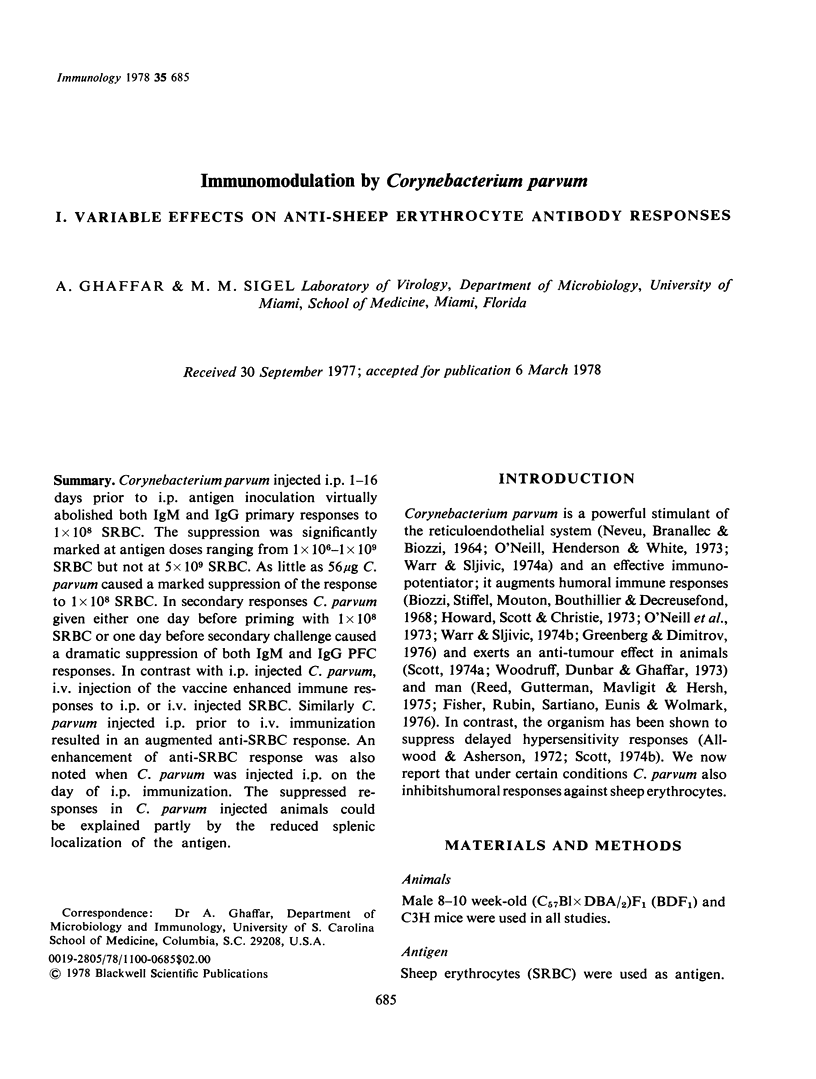
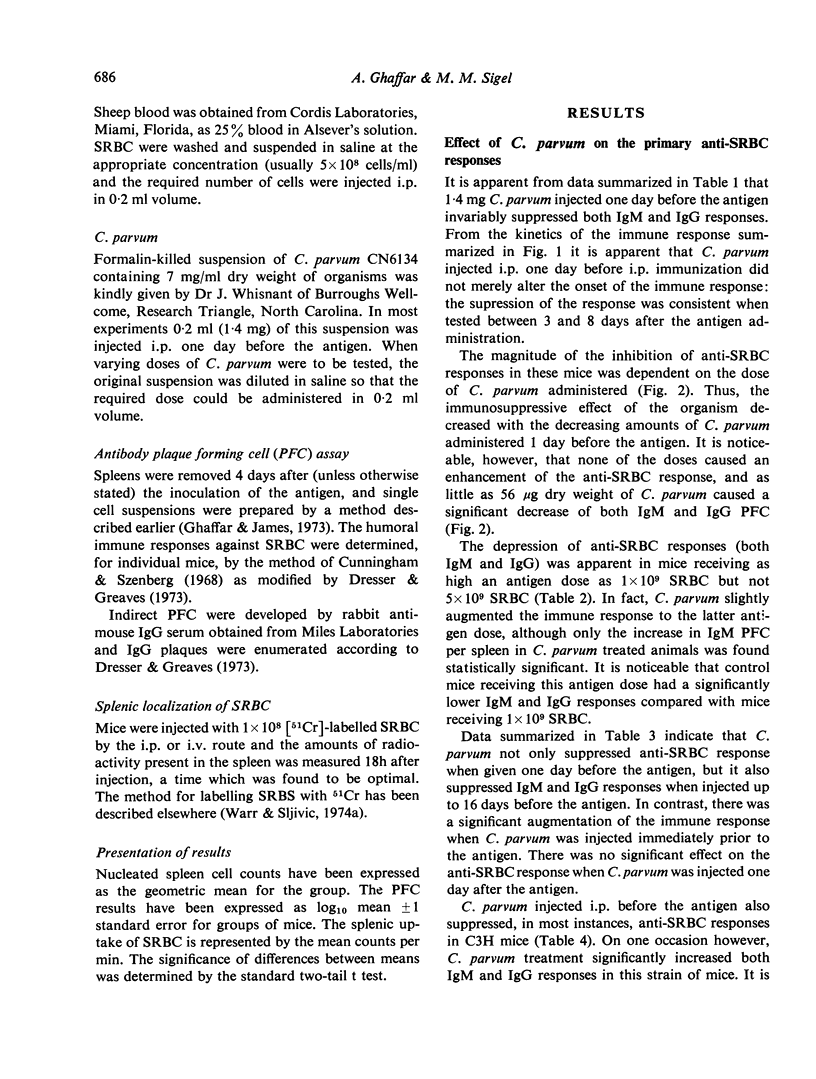
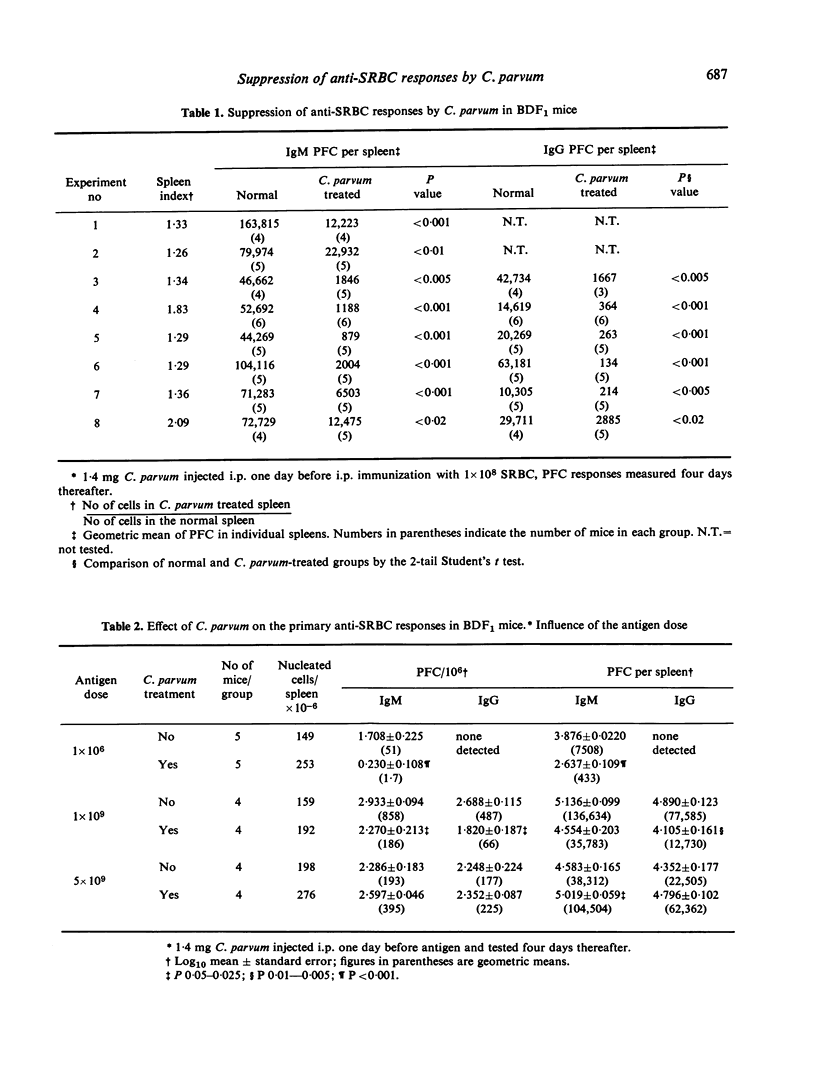
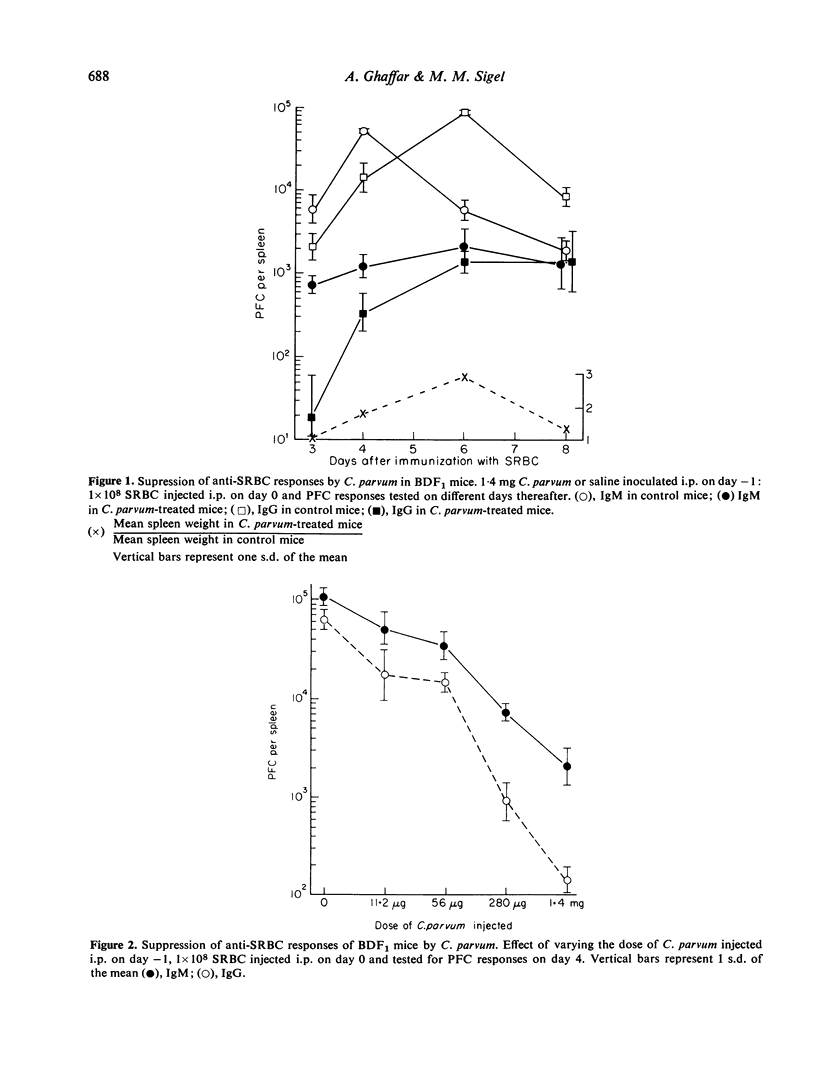


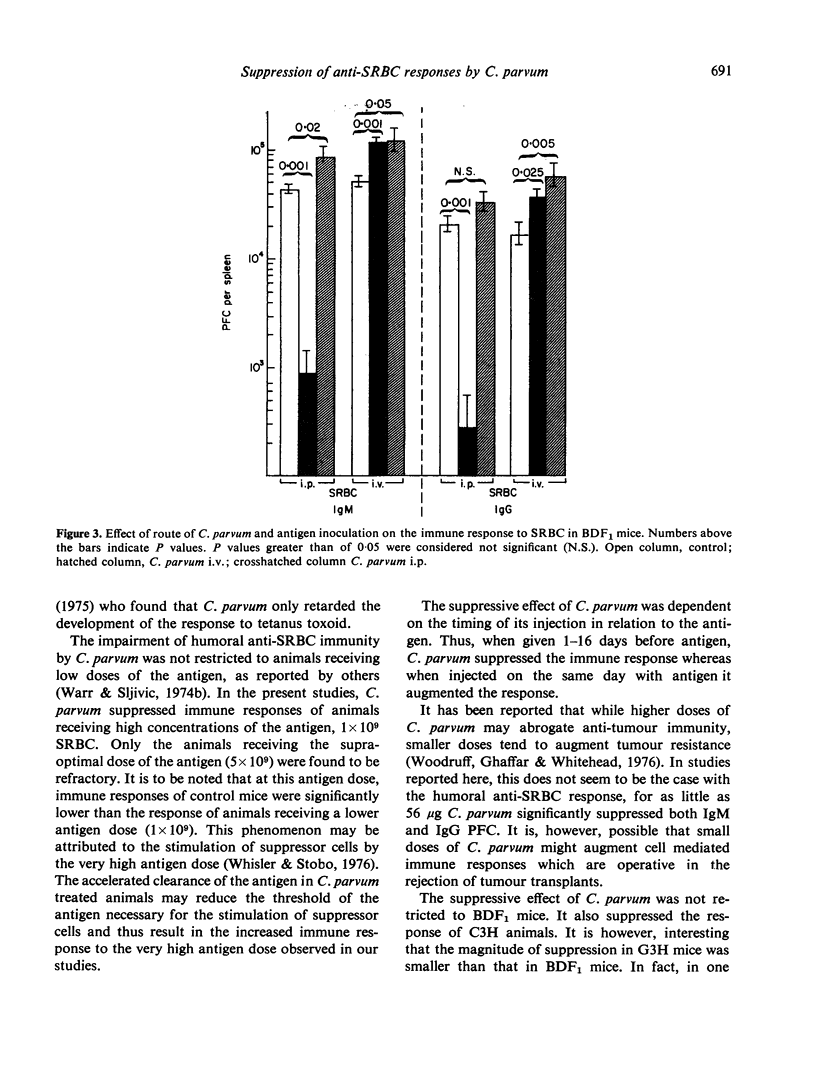
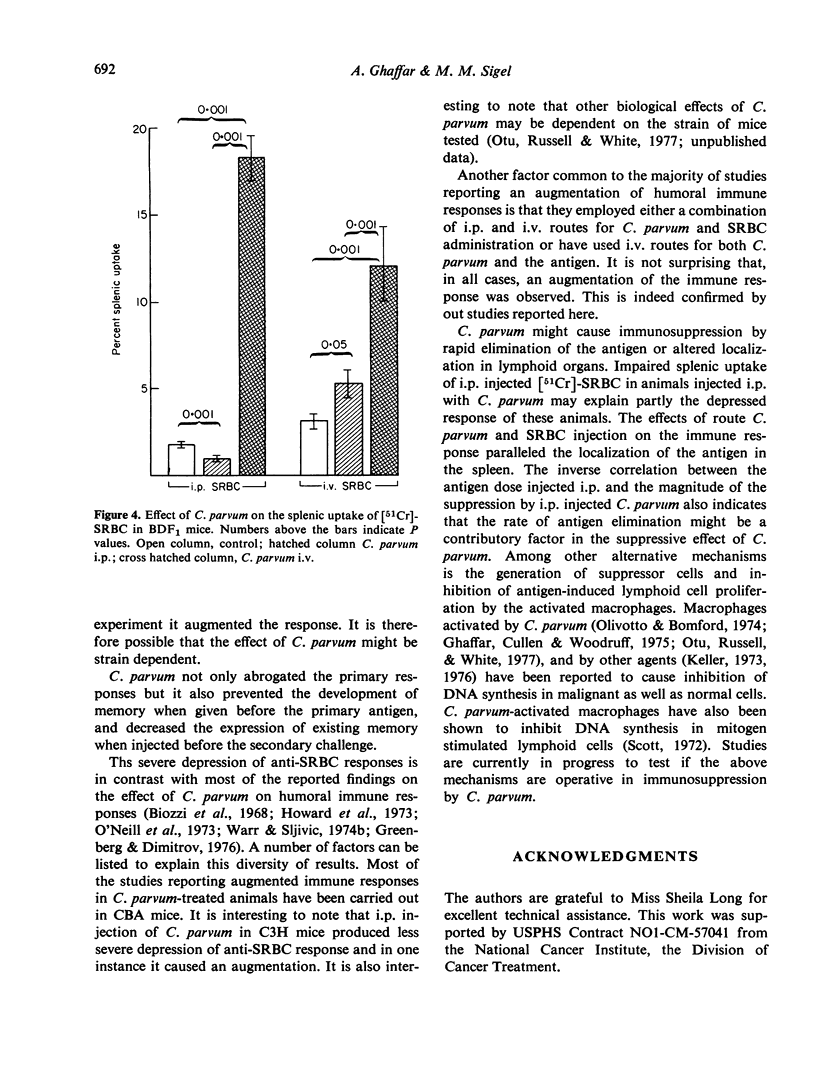
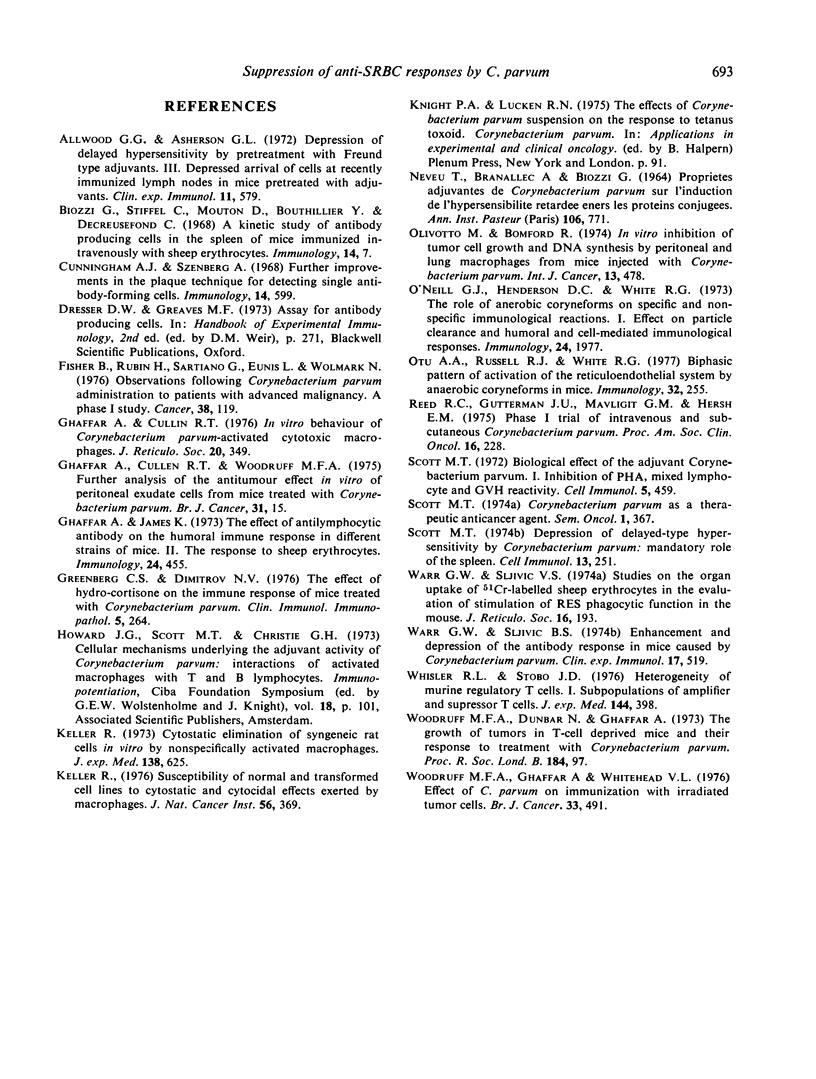
Selected References
These references are in PubMed. This may not be the complete list of references from this article.
- Allwood G. G., Asherson G. L. Depression of delayed hypersensitivity by pretreatment with Freund-type adjuvants. 3. Depressed arrival of lymphoid cells at recently immunized lymph nodes in mice pretreated with adjuvants. Clin Exp Immunol. 1972 Aug;11(4):579–584. [PMC free article] [PubMed] [Google Scholar]
- Cunningham A. J., Szenberg A. Further improvements in the plaque technique for detecting single antibody-forming cells. Immunology. 1968 Apr;14(4):599–600. [PMC free article] [PubMed] [Google Scholar]
- Fisher B., Rubin H., Sartiano G., Ennis L., Wolmark N. Observations following Corynebacterium parvum administration to patients with advanced malignancy. a phase I study. Cancer. 1976 Jul;38(1):119–130. doi: 10.1002/1097-0142(197607)38:1<119::aid-cncr2820380121>3.0.co;2-1. [DOI] [PubMed] [Google Scholar]
- Ghaffar A., Cullen R. T. In vitro behavior of Corynebacterium parvum-activated cytotoxic macrophages. J Reticuloendothel Soc. 1976 Nov;20(5):349–357. [PubMed] [Google Scholar]
- Ghaffar A., James K. The effect of antilymphocytic antibody on the humoral immune response in different strains of mice. II. The response to sheep erythrocytes. Immunology. 1973 Mar;24(3):455–465. [PMC free article] [PubMed] [Google Scholar]
- Greenberg C. S., Dimitrov N. V. The effect of hydrocortisone on the immune response of mice treated with Corynebacterium parvum. Clin Immunol Immunopathol. 1976 Mar;5(2):264–271. doi: 10.1016/0090-1229(76)90031-3. [DOI] [PubMed] [Google Scholar]
- Keller R. Cytostatic elimination of syngeneic rat tumor cells in vitro by nonspecifically activated macrophages. J Exp Med. 1973 Sep 1;138(3):625–644. doi: 10.1084/jem.138.3.625. [DOI] [PMC free article] [PubMed] [Google Scholar]
- Keller R. Susceptibility of normal and transformed cell lines to cytostatic and cytocidal effects exerted by macrophages. J Natl Cancer Inst. 1976 Feb;56(2):369–374. doi: 10.1093/jnci/56.2.369. [DOI] [PubMed] [Google Scholar]
- NEVEU T., BRANELLEC A., BIOZZI G. PROPRI'ET'ES ADJUVANTES DE CORYNEBACTERIUM PARVUM SUR LA PRODUCTION D'ANTICORPS ET SUR L'INDUCTION DE L'HYPERSENSIBILIT'E RETARD'EE ENVERS LES PROT'EINES CONJUGU'EES. Ann Inst Pasteur (Paris) 1964 May;106:771–777. [PubMed] [Google Scholar]
- Olivotto M., Bomford R. In vitro inhibition of tumour cell growth and DNA synthesis by peritoneal and lung macrophages from mice injected with Corynebacterium parvum. Int J Cancer. 1974 Apr 15;13(4):478–488. doi: 10.1002/ijc.2910130406. [DOI] [PubMed] [Google Scholar]
- Otu A. A., Russell R. J., White R. G. Biphasic pattern of activation of the reticuloendothelial system by anaerobic coryneforms in mice. Immunology. 1977 Mar;32(3):255–264. [PMC free article] [PubMed] [Google Scholar]
- Scott M. T. Biological effects of the adjuvant Corynebacterium parvum. I. Inhibition of PHA, mixed lymphocyte and GVH reactivity. Cell Immunol. 1972 Nov;5(3):459–468. doi: 10.1016/0008-8749(72)90072-x. [DOI] [PubMed] [Google Scholar]
- Scott M. T. Depression of delayed-type hypersensitivity by Corynebacterium parvum: mandatory role of the spleen. Cell Immunol. 1974 Aug;13(2):251–263. doi: 10.1016/0008-8749(74)90243-3. [DOI] [PubMed] [Google Scholar]
- Warr G. W., Sljivić V. S. Enhancement and depression of the antibody response in mice caused by Corynebacterium parvum. Clin Exp Immunol. 1974 Jul;17(3):519–532. [PMC free article] [PubMed] [Google Scholar]
- Whisler R. L., Stobo J. D. Heterogeneity of murine regulatory T cells. I. Subpopulations of amplifier and suppressor T cells. J Exp Med. 1976 Aug 1;144(2):398–413. doi: 10.1084/jem.144.2.398. [DOI] [PMC free article] [PubMed] [Google Scholar]
- Woodruff M. F., Ghaffar A., Dunbar N., Whitehead V. L. Effect of C. Parvum on immunization with irradiated tumour cells. Br J Cancer. 1976 May;33(5):491–495. doi: 10.1038/bjc.1976.79. [DOI] [PMC free article] [PubMed] [Google Scholar]


